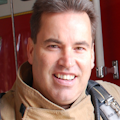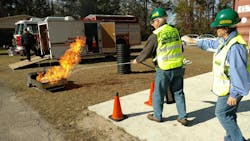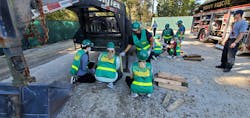Community Risk Reduction: Redefining the ‘First Responder’ and Reimagining CRR
From “leather lungs” to SCBA, from solely fire suppression to all-hazard response, from primarily response to proactive community risk reduction (CRR), the evolution of the fire service has been a continual paradigm shift, whether it has been by choice or forced because of changes in science and society.
Today, from the pandemic to social unrest, our nation has entered into unprecedented times that further challenge our ability to protect property and save lives. Large-scale unstable incidents, either natural or manmade, combined with increased risk to personnel, either from viruses, violence or staffing, underscore the fact that we can’t be everywhere at the same time, and we can’t be on time everywhere.
The paradigm shift
In previous columns in this space, my premise centered on two core points:
1) Today’s fire service must envision and approach its service delivery not from the perspective that it’s a community service that responds to random acts of misfortune but as a homeland security service that protects the front doors and main streets of America; and 2) To increase and maintain community value, fire departments must have a seat at the table to either offer solutions for their community’s perceived risks, support solutions or, at the very least, show a concern for those risks.
I now submit that it’s crucial to add a third premise to my core points: The fire service must redefine the meaning of first responder, reimagine its purpose and approach to CRR, and usher in yet another paradigm shift to our profession.
Arguably, this shift in the paradigm began in 1999 at Columbine High School in Littleton, CO. Two students who turned gunmen roamed freely throughout the school and killed 13 students and wounded 21, as law enforcement, fire and EMS personnel followed the protocols of the time and waited helplessly outside.
Major changes to the operations at violent scenes swept not only first responders but communities and school systems, too. From the creation of what we know today as rescue task forces, to school threat assessment teams and internal school policies, the emphasis has been to front-load the system to reduce response times to minimize damages and loss of life. However, the emphasis mostly has focused on the actions of professionals, namely school administrators and emergency responders.
In 2012, the paradigm shift intensified during a violent event in Aurora, CO, that left 12 dead and 70 wounded. A TriData after-action report of the event credited firefighters, EMS providers and law enforcement officers with making excellent, sometimes “unconventional,” decisions that saved lives, namely the use of police vehicles to transport the wounded to the hospital because of the inability of ambulances to reach the scene. According to the report, all of the 27 victims who were transported by law enforcement survived. The after-action report further stated that the use of tourniquets and the mass-casualty drills that prepared hospitals to receive the influx of wounded were essential to saving lives. That said, once again, the paradigm shift placed emphasis on professions front-loading an event.
In 2013 and 2017, in Boston and Las Vegas, respectively, mass-casualty events again shifted our paradigm, resulting in further front-loading that redefines first responders and our theory of and approach to CRR. The respective after-action reports credited civilians for saving lives, both by administering bleeding-control measures and helping clear the crowds to assist emergency vehicles in access and egress. In Boston, the report stated that the scene was clear of victims in 22 minutes and that all those who were transported survived. In Las Vegas, civilians transported many of the wounded in their personal vehicles.
So, what does all of this tell us? As we continue down this road of social and environmental changes, we must change as well to adapt and to save lives. Whether because of a scene still being actively violent or unstable, because of multiple incidents occurring at the same time, or because of the mass chaos that delays professional response, it takes us longer and longer to reach victims and get them to the hospital. The end result is savable lives are lost. More and more after-action reports highlight—and celebrate—unconventional lifesaving methods and approaches, from police and civilian vehicles being used to transport victims, to bystanders performing immediate action, such as CPR and Stop the Bleed. For us to be “everywhere at the same time and on time everywhere,” we obviously must reimagine our approach and shift the paradigm.
Currently, CRR programs are viewed and approached as an additional service to the public, a nicety, a consistently understaffed public relations outreach that hopefully reduces calls and saves lives. However, that no longer is enough. CRR should be viewed as a program to enhance emergency response capability and to increase the odds of critical lifesaving action being delivered everywhere at the same time and on time.
CRR programs must go beyond simply educating individual citizens on how to be safe. They must instruct and train whole communities, those who truly will be the first to respond, as a cadre of responders who can deliver immediate lifesaving skills before professionals arrive.
Israel credits universal military training for a significant portion of its citizenry (aka compulsory military service) for the country’s success in regard to national defense. Upon the occurrence of any crisis, everyday citizens become responders who are prepared and trained to do so.
“Boston Strong” became symbolic of the city’s capability to respond and recover from large-scale unstable events. A Harvard report of the Boston Marathon bombing in 2013 stated that Boston Strong “is much more than a phrase” but encompasses the city’s pride that inspired the successful response, from the pizza chef who knew how to use his apron as tourniquet, to the doctors and nurses at the hospital. “Boston Strong is an expression of resilience.”
For your community to be AnyTown Strong, it must be resilient. When an event occurs, it will be citizens who will be the first responders, and citizens who are prepared and trained to do so will increase the saving of lives and property and help the community to recover quickly.
Although many emergency response agencies have plans in place to handle large-scale unstable events, the heart of a community’s strength lies within the citizens themselves and their ability to withstand, respond and recover. In other words, the capability of any community to be strong depends on a strong, repurposed CRR program and effort.
Time to shift the paradigm.
About the Author

Daniel Byrne
DANIEL BYRNE is a community support officer for the Burton Fire District, Beaufort County, SC, and a retired assistant fire chief of training for the Georgia Air National Guard 165th Fire Department. A third-generation firefighter, he holds an associate degree and a bachelor’s degree in fire science as well as a master’s degree in public administration and disaster management. Byrne is an alumnus of the National Fire Academy. He received state and local awards for public relations and educational programs as well as community partnerships and served as a conference presenter and keynote speaker.


